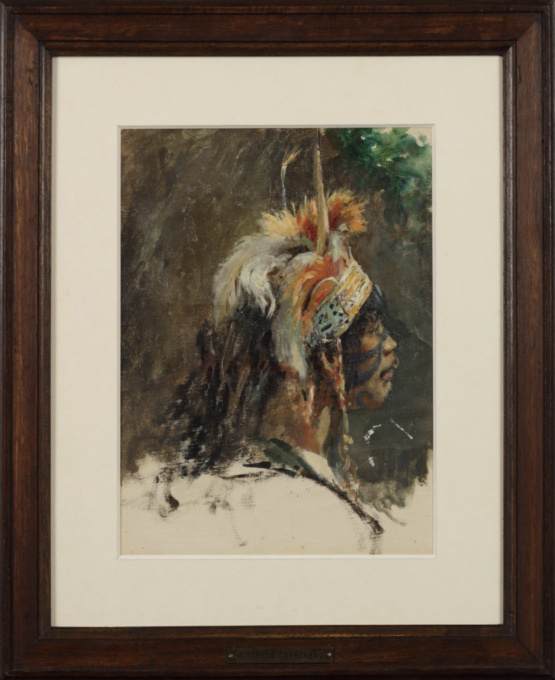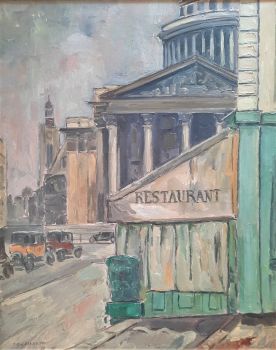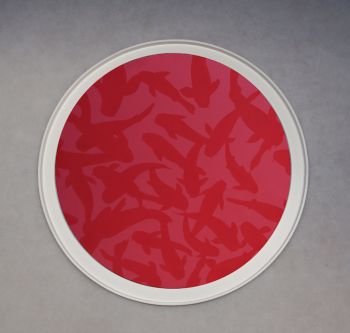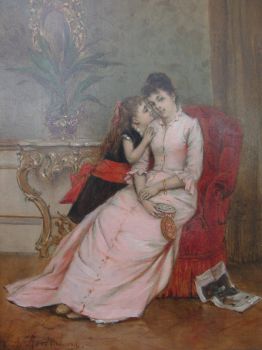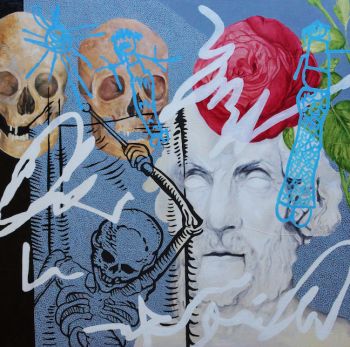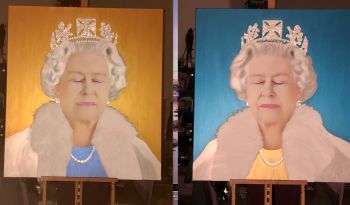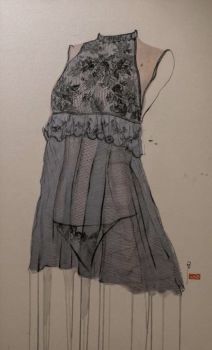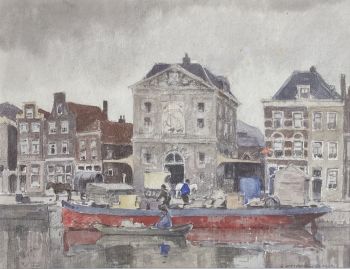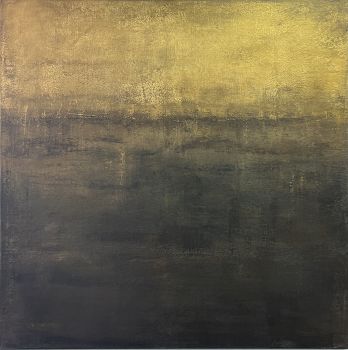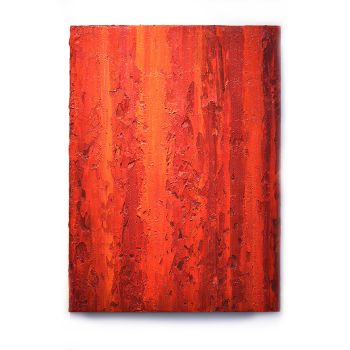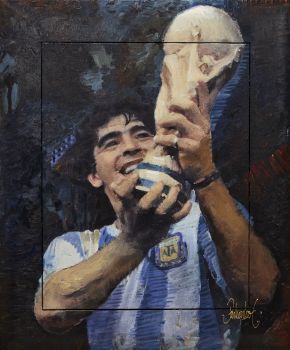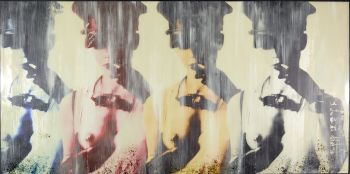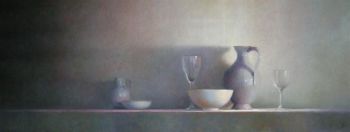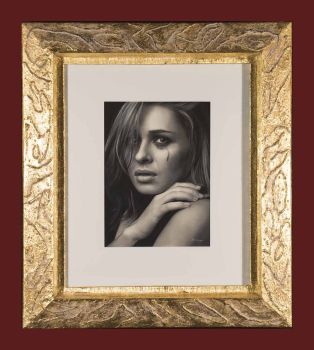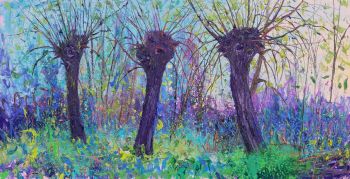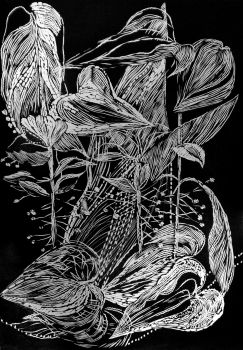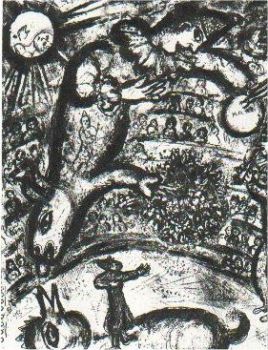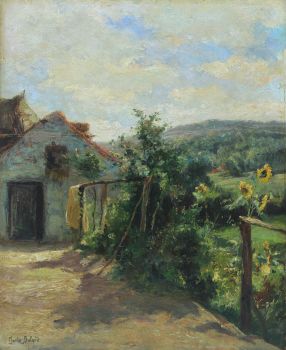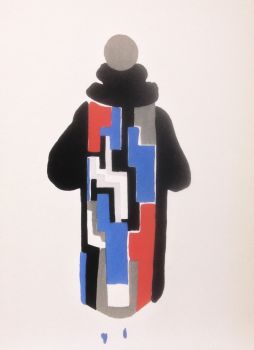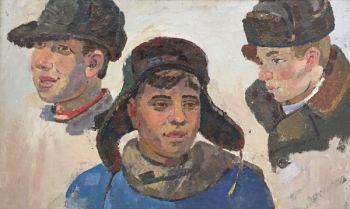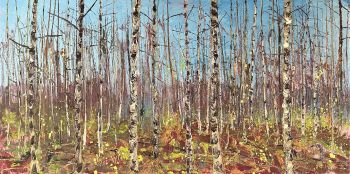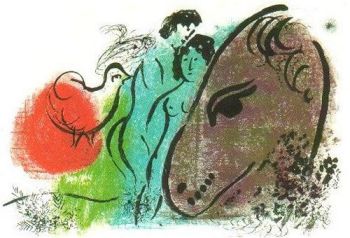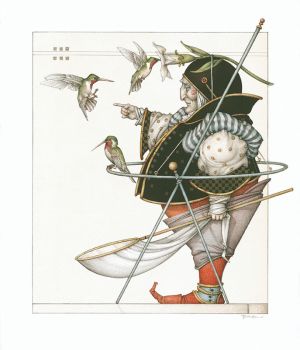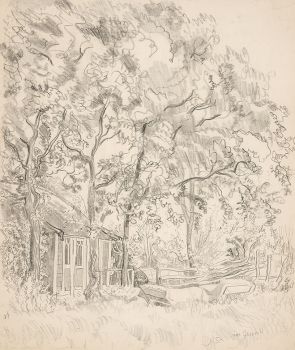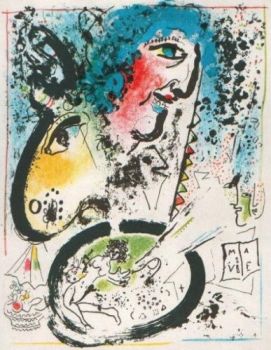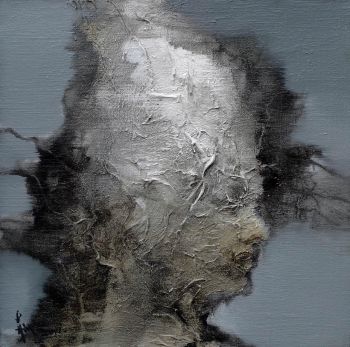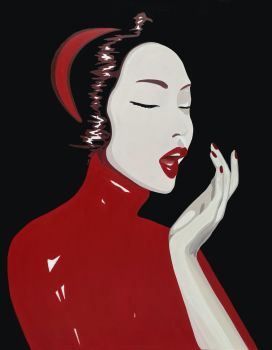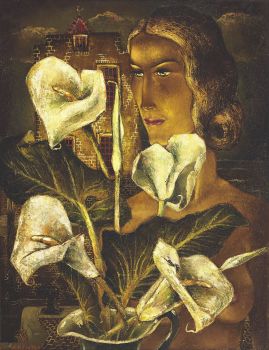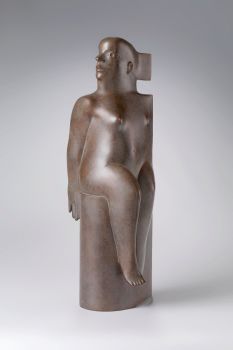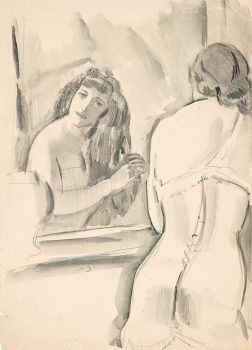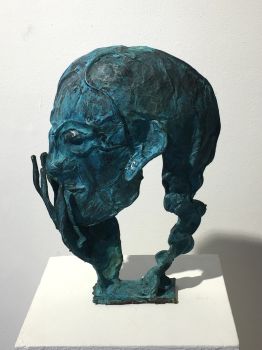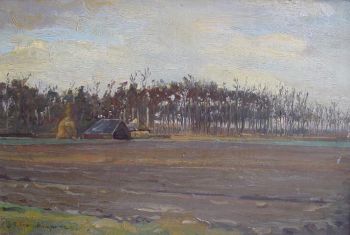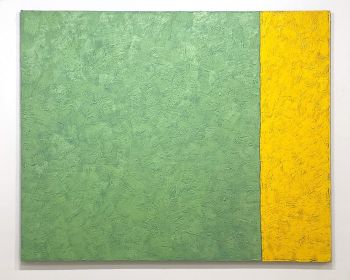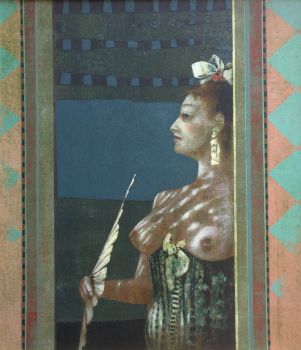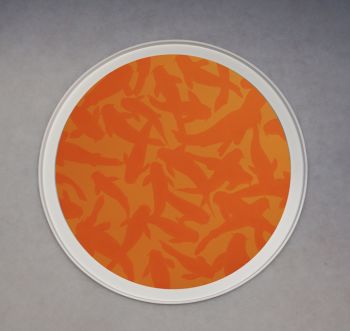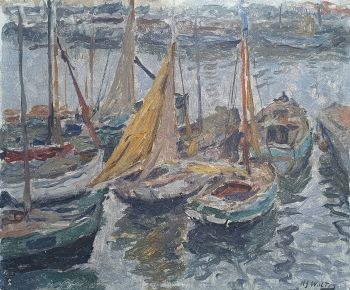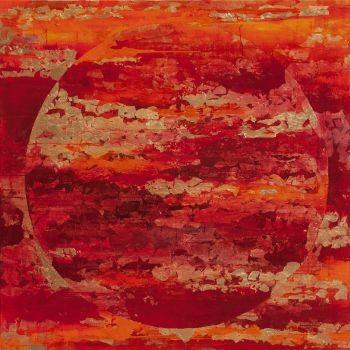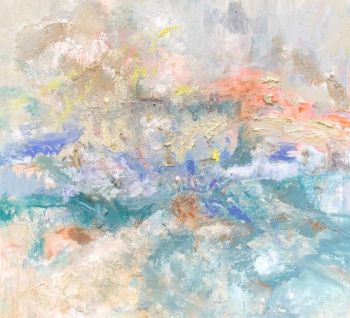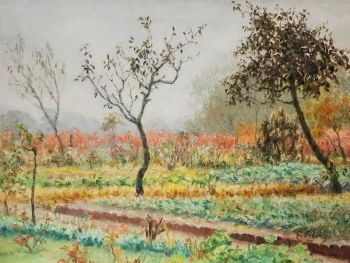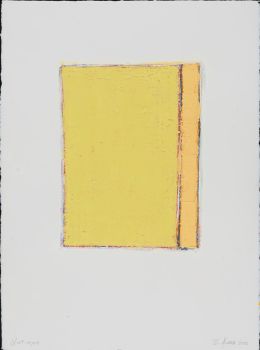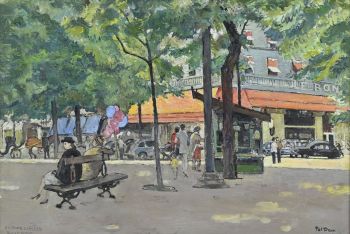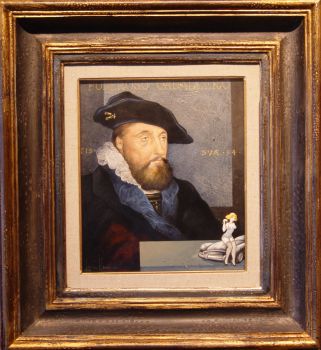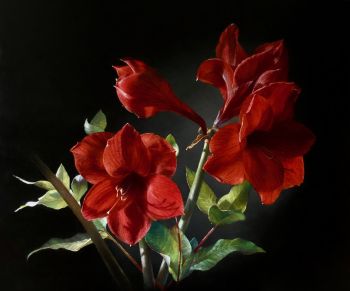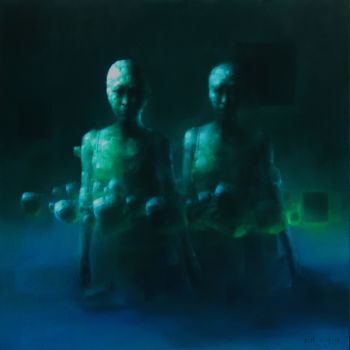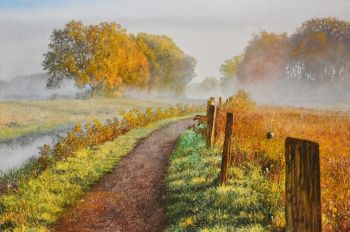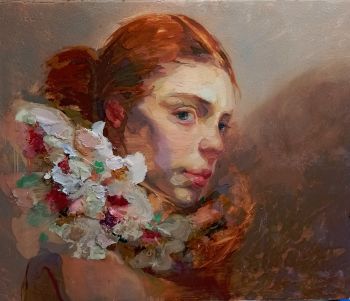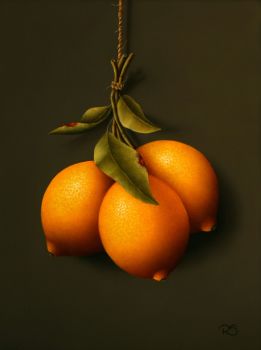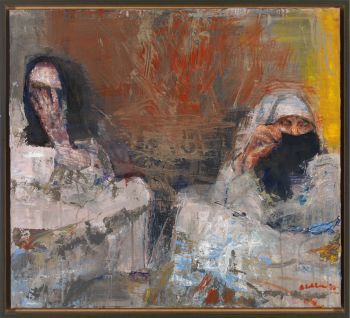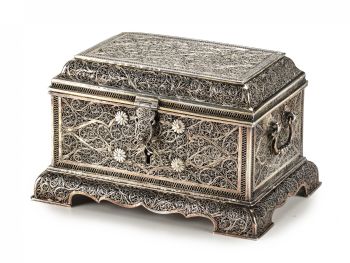Study of a Guarani man, Argentina, circa 1922 1922
José Moreno Carbonero
ToilePeinture à l'huilePeindre
32 ⨯ 26 cm
Prix sur demande
Zebregs & Röell - Fine Art - Antiques
- Sur l'oeuvre d'artJosé Moreno Carbonero (1858-1942)
Oil on canvas, H. 32.2 x W. 26 cm
Moreno Carbonero was born, brought up and studied in Malaga, Spain. In 1875, after a two-year stay in Morocco, he moved to Paris on a grant from the Malaga Provincial Council. He joined the studio of Jean-Léon Gérôme. A regular visitor, the famous art dealer Adolphe Goupil commissioned his first works, mainly small genre subject paintings. Between 1881 and 1884, Moreno Carbonero lived in Rome before moving to Madrid. There, he achieved his first success with his painting The Conversion of the Duke of Gandia, which is now in the Prado Museum. From then on, the artist specialized in history paintings, often on a large scale; the best example is The Entry of Roger de Flor into Constantinople, painted for the Madrid Senate in 1888, which hasn’t moved ever since. Besides being a historical painter, the artist was also a portraitist, painting elegant portraits of Madrid's high society (see, for instance, Purificacion Fontan, Marquise del Pazo de la Merced, 1908, Prado Museum, Madrid).
At the beginning of the 20th century, the Argentine government was preparing to celebrate the May Revolution, which started on May 18, 1810, and led to the independence of Argentina. The municipality of Buenos Aires, joining in the celebration, commissioned a historical painting dedicated to the founding of the capital from José Moreno Carbonero. Under time pressure, Moreno Carbonero produced a work with which he was dissatisfied and criticized when he arrived in Argentina in 1910. For this reason, in 1922, he asked for the work to be returned to him to correct it. He studied the city's history, the site and the event depicted in situ and made substantial changes to make the painting more historically accurate. The definitive work, wholly reworked, was placed in the municipal palace in 1924. It can still be admired in its original place.
The city of Buenos Aires was founded on June 11, 1580, by Juan de Garay under the name of the 'Santissima Trinidad y Puerto de Sant Maria del Buen Ayre'. In Moreno Carbonero's painting, Juan de Garay, in the centre of the composition, raises his sword before the foundation pillar. On the right, the notary Pedro de Xeres signs the foundation act; on the left, the friar Juan de Rivadeneira raises the cross, and the alderman Don Pedro de Quirós carries the royal standard. All around, men in arms can be seen, as well as representatives of the native people from the area, including a man from the Guarani ethnic group. The present painting is a preparatory sketch of the head of this figure. - Sur l'artiste
Né à Malaga le 24 mars 1858, José Moreno Carbonero suit d'abord une formation d'artiste à l'École supérieure des beaux-arts de la ville, où il fut l'élève de Bernardo Ferrándiz et manifeste dès son plus jeune âge un talent exceptionnel pour la peinture. Après avoir voyagé à Séville et à Paris grâce à une bourse accordée par la Diputación (conseil provincial) de Malaga, il y exécute à seulement vingt et un ans son premier grand tableau historique, El príncipe de Viana (« Le Prince de Viana », 1881). , qui l'annonce comme l'un des grands maîtres du genre, comme le confirmeront quelques années plus tard des œuvres aussi significatives que La conversión del duque de Gandía (« La Conversion du duc de Gandía », 1884) et la splendide Entrada de Roger de Flor en Constantinopla (« Entrée de Roger de Flor à Constantinople », 1884), commandé par le Sénat et constitue sans aucun doute l'une des peintures historiques espagnoles les plus importantes du XIXe siècle.
En 1898, Moreno devient membre de l'Académie San Fernando de Madrid et s'installe définitivement dans la ville. Il vécut ensuite confortablement dans son manoir de la rue Miguel Ángel et fut considéré comme l'un des portraitistes les plus réputés de la haute société, même si ces œuvres sont les exemples les moins attrayants de son œuvre. Il a enseigné Dalí et Picasso à l'École des Beaux-Arts et a reçu de son vivant les plus hautes décorations et distinctions, comme les croix d'Alphonse XII et d'Isabelle la Catholique, entre autres. Il fut également nommé grand officier de la couronne d'Italie et de Saint Michel de Bavière et commandant de l'Étoile polaire de Suède.
Peintre extraordinairement prolifique, outre ses peintures d'histoire et ses portraits, il réalise également des scènes de genre et orientalistes, des peintures de types humains et des vues de villes mettant en scène des bâtiments monumentaux. Il se distingue particulièrement par ses nombreuses peintures illustrant des épisodes d'œuvres littéraires, notamment Gil Blas ou encore Don Quichotte, pour lesquelles il développe une véritable passion au cours des dernières décennies de sa vie. Il mourut à Madrid le 15 avril 1942.
Êtes-vous intéressé par l'achat de cette oeuvre?
Related artworks
- 1 - 4 / 24
Joris August Verdonkschot
Degas Revisited - In Stock2000 - 2020
Prix sur demandeMorren Galleries Utrecht
1 - 4 / 24Carel Nicolaas Storm van 's Gravesande
My studio in Bruxelles1841 - 1924
Prix sur demandeKunsthandel Pygmalion
1 - 4 / 24Artiste Inconnu
A large wall map of Asia by Nicolas de Fer 1647 - 1720
Prix sur demandeZebregs & Röell - Fine Art - Antiques
Artiste Inconnu
A Dutch colonial Indonesian betel box with gold mounts1750 - 1800
Prix sur demandeZebregs & Röell - Fine Art - Antiques
1 - 4 / 12

